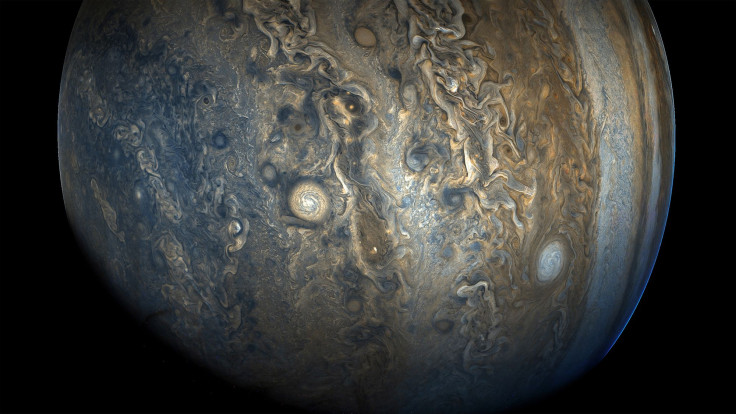Jupiter's Disorderly Birth: Solar System’s Largest Planet Formed In Distinct Phases

Jupiter, the largest planet of our solar system, formed some four and a half billion years ago in what has been called as the solar nebula – the cloud of gas and dust in which all bodies inhabiting the present-day solar neighborhood came to be. Everything was chaotic back then, but according to a new study, the birth of the gas giant, which currently weighs as much as 300 Earth, occurred in long, broken phases – in a much disorderly fashion.
Scientists have long debated the birth of Jupiter, but last year, researchers from the University of Bern and the University of Zurich were presented with a major problem, a meteorite makeup-based report that suggested the gas giant – which was still growing – acted as a barrier and divided the solar nebula into two regions for about two million years.
According to the report, which was presented at a United States-based conference, the young planet likely perturbed the dust disk and trapped material outside its orbit. The division remained until the planet became as massive as 50 Earths and had enough gravitational tug to pull the material inwards.
"How could it have taken two million years for Jupiter to grow from 20 to 50 Earth masses?" Julia Venturini, one of the authors of the study, said in a statement. "That seemed much too long.”
To solve the mystery, Julia and team from the University of Bern and ETH Zurich developed a series of mathematical models and found the Jupiter’s formation occurred in distinct, disorderly phases took a lot longer to complete than initially thought.
As per these models, the life of Jupiter began as a planetary embryo, one that rapidly accreted pebble-sized rocks to form a core. This was the first phase of formation that took approx. one million years and gave the gas giant a mass of around 15-20 Earths.
In the second phase, a young Jupiter interacted with massive, kilometer-sized rocks or planetesimals, rather than the pebble-sized rocks that got trapped due to the barrier it had formed. The accretion of these humongous rocks brought mass but also released a lot of energy that heated the gaseous atmosphere of the young planet. This prevented cooling and accretion of gas required for rapid growth for about two million years.
However, it kept using those planetesimals to grow slowly, becoming as massive as 50 Earths over a three million-year-long period. After this, the division broke and the third phase of gas and rocky accretion began, which created the massive gas giant we see today.
"Pebbles are important in the first stages to build a core quickly, but the heat provided by planetesimals is crucial to delay gas accretion so that it matches the timescale given by the meteorite data," the astrophysicists concluded. They believe some elements from this model could even be used to explain the birth of other gas giants in the Solar System.
The study titled "The Formation of Jupiter by Hybrid Pebble-Planetesimal Accretion" was published Aug. 27 in the journal Nature astronomy.

© Copyright IBTimes 2025. All rights reserved.





















